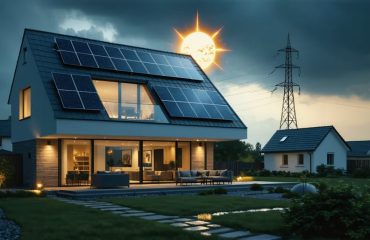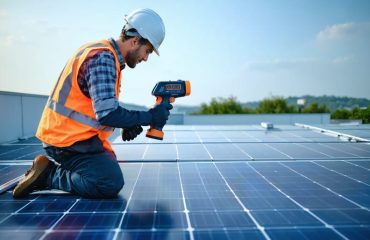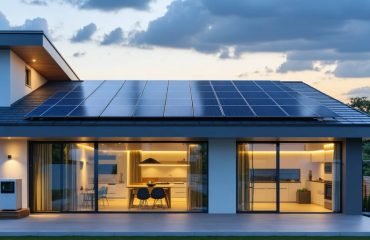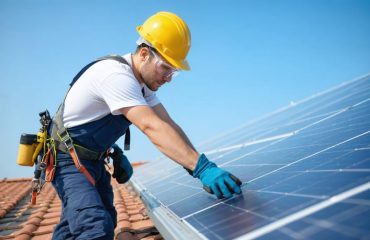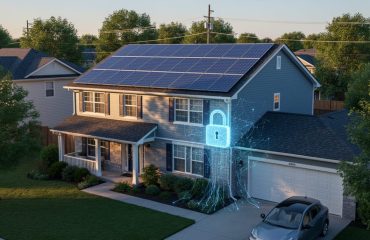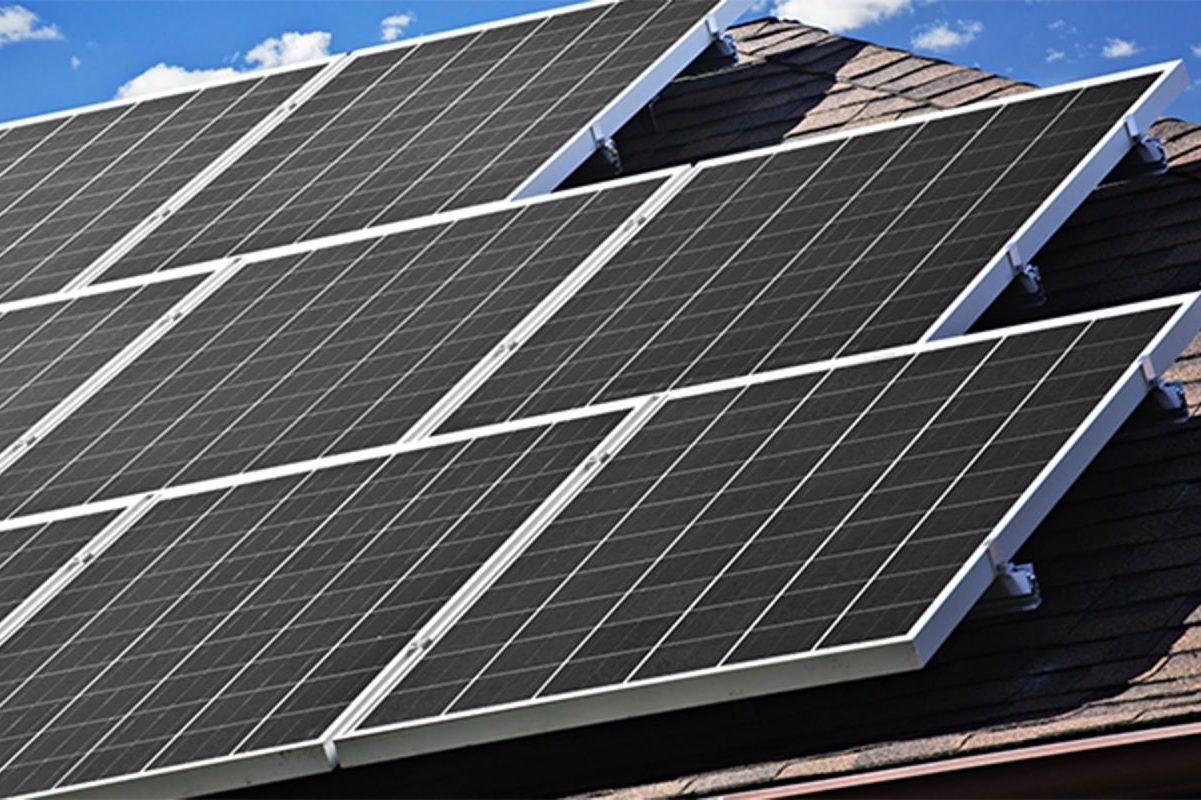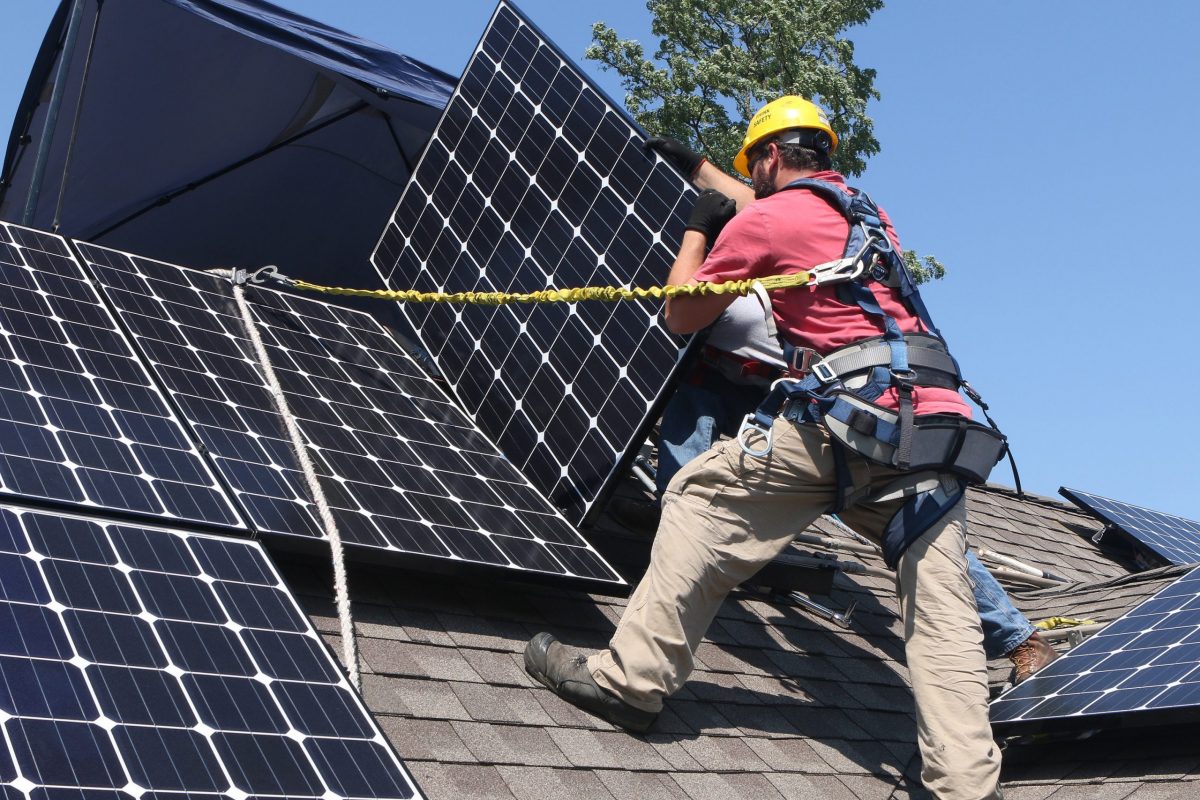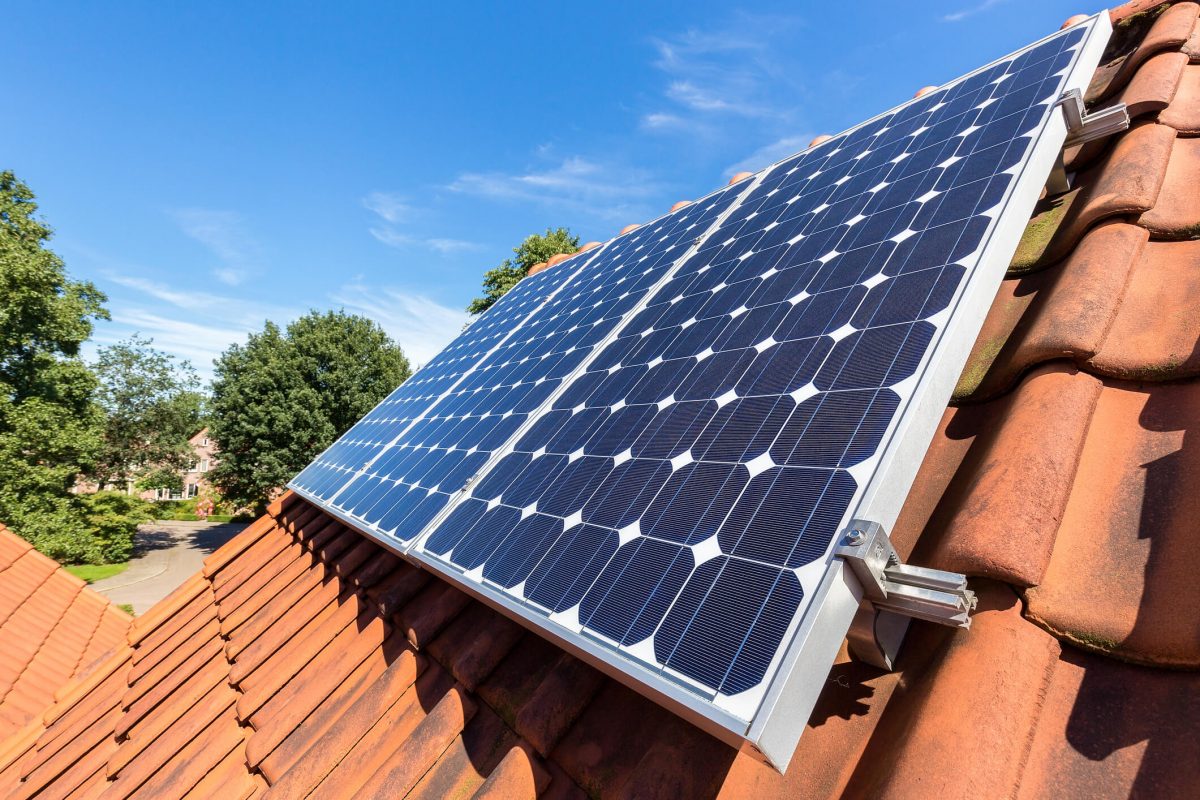In today’s interconnected energy landscape, cybersecurity threats to renewable energy systems pose significant challenges for homeowners and utilities alike. As solar panels, smart meters, and home energy management systems become increasingly connected to the internet, the need to protect your solar investment from digital threats has never been more critical. Recent studies show that cyber attacks targeting renewable energy infrastructure have increased by 50% in the past two years, putting both personal data and system functionality at risk.
Fortunately, implementing robust cybersecurity measures doesn’t require advanced technical expertise. Modern renewable energy systems come equipped with built-in security features, and straightforward protective measures can significantly enhance their safety. By understanding the basics of renewable energy cybersecurity, homeowners can ensure their sustainable energy solutions remain secure while continuing to deliver clean, reliable power for years to come.
Why Your Solar System Needs Cybersecurity Protection
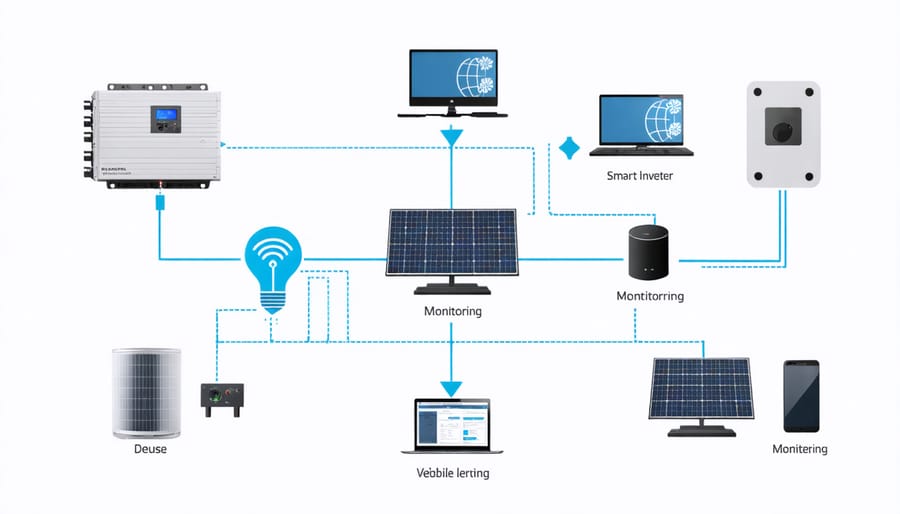
Smart Inverters and Connected Devices
Smart inverters and connected monitoring systems have revolutionized how we manage solar energy systems, but they also create potential entry points for cyber threats. These devices connect to the internet to provide real-time data and remote control capabilities, making them vulnerable to unauthorized access if not properly secured.
Your smart inverter communicates with other devices in your home network and sends performance data to monitoring platforms. While this connectivity helps optimize your system’s performance and alerts you to maintenance needs, it’s important to understand that any internet-connected device needs proper protection.
Common vulnerabilities include weak default passwords, outdated firmware, and unsecured network connections. The good news is that most security risks can be prevented through simple steps like regular software updates, strong passwords, and working with certified installers who follow cybersecurity best practices. Manufacturers are also continuously improving their security features to protect your investment and ensure your renewable energy system remains safe and efficient.
Mobile Apps and Remote Monitoring
Solar monitoring apps have revolutionized how we manage our renewable energy systems, but they also require careful attention to security. Always download monitoring apps directly from official sources like the Apple App Store or Google Play Store, and keep them updated with the latest security patches.
When setting up your monitoring account, use a strong, unique password and enable two-factor authentication if available. Be cautious about using public Wi-Fi networks to access your solar monitoring dashboard, as these connections can be vulnerable to cybercriminals.
Many solar installers now offer secure remote monitoring services that use encrypted connections to protect your data. These systems allow you to track your solar production, energy consumption, and system health while maintaining robust security measures.
Remember to regularly review which devices and apps have access to your solar monitoring system, and remove any that you no longer use or recognize. This simple practice helps maintain the security of your renewable energy investment while enjoying the convenience of mobile monitoring.
Common Cyber Threats to Home Solar Systems
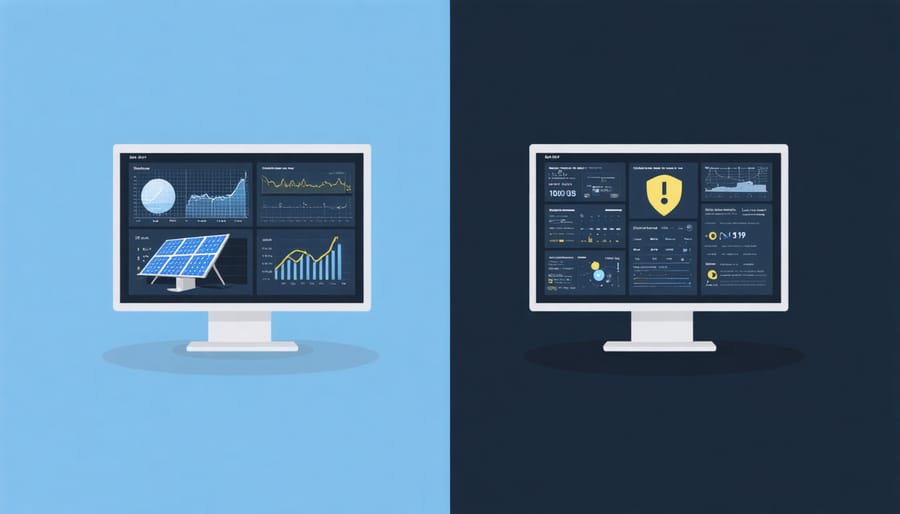
Data Privacy Concerns
As renewable energy systems become increasingly connected to smart grids, protecting personal data has become just as important as securing the power supply itself. Your solar installation collects detailed information about your energy consumption patterns, which could reveal when you’re home, your daily routines, and even which appliances you use most frequently.
To protect your privacy, make sure your solar installer implements strong data encryption and secure storage practices. Ask about their data retention policies and whether they share information with third parties. Consider opting out of non-essential data collection if possible, and regularly review your privacy settings in any associated mobile apps or monitoring systems.
It’s also wise to use a separate network for your renewable energy systems, keeping them isolated from your home’s main Wi-Fi network. This creates an additional layer of protection for both your personal information and energy data. Regular software updates and security patches are essential, as they often include important privacy protection improvements.
Remember, while sharing some data is necessary for optimal system performance, you have the right to know how your information is being used and protected.
System Control Vulnerabilities
Modern renewable energy systems rely heavily on digital controls and monitoring, making them potential targets for cybersecurity threats. The most common vulnerability lies in the control systems that manage power generation, storage, and distribution. Hackers could potentially manipulate these systems to disrupt energy production or alter settings that protect your equipment.
For example, attackers might target inverter settings, causing them to operate outside safe parameters or shut down completely. This is particularly concerning for emergency solar power systems that homes rely on during grid outages. Smart meters and monitoring platforms could also be compromised, leading to incorrect readings or unauthorized changes to your system’s operation.
The good news is that these vulnerabilities can be effectively addressed through proper security measures. Most modern solar installations come with built-in safeguards, and working with certified installers ensures your system follows current security protocols. Regular software updates and monitoring can help maintain your system’s security while allowing you to enjoy the benefits of clean, renewable energy with peace of mind.
Simple Security Steps for Your Solar Investment
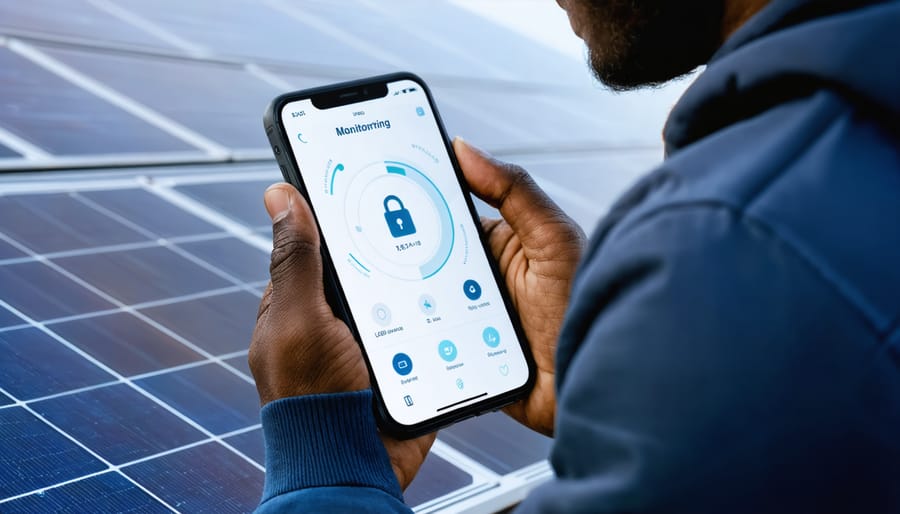
Password and Network Protection
Protecting your solar monitoring system starts with implementing strong password practices and secure network configurations. Create unique, complex passwords that combine uppercase and lowercase letters, numbers, and special characters. Avoid using obvious information like birth dates or address numbers. Consider using a password manager to securely store and manage these credentials.
Your solar monitoring system should be connected to a separate, dedicated Wi-Fi network whenever possible. This network segregation adds an extra layer of security by isolating your solar equipment from other smart home devices. Be sure to enable WPA3 encryption on your router and regularly update its firmware to maintain strong protection against potential threats.
When setting up your solar monitoring system, take advantage of all available essential security features, including two-factor authentication if offered by your system manufacturer. This additional verification step significantly reduces the risk of unauthorized access.
Remember to change default passwords immediately upon installation and update them every few months. Keep your monitoring system’s software current by enabling automatic updates or regularly checking for new versions. These simple yet effective measures will help ensure your solar investment remains secure while providing you with peace of mind and reliable performance.
Regular Updates and Maintenance
Just like your smartphone or computer, your renewable energy system needs regular software updates to stay secure and efficient. These updates are crucial as they patch security vulnerabilities, improve system performance, and protect against emerging cyber threats.
Make it a habit to check for updates at least monthly, and always install them promptly when they become available. Many modern renewable energy systems can automatically download and install updates, but it’s wise to verify this feature is enabled and working correctly.
Beyond software updates, regular maintenance checks are essential for your system’s cybersecurity. This includes reviewing access logs, updating passwords, and ensuring all security features are properly configured. Consider setting calendar reminders for these tasks to stay on track.
Keep detailed records of all updates and maintenance activities. This documentation helps track system changes and can be valuable if you need technical support or want to identify potential security issues.
Remember that outdated software is like leaving your front door unlocked – it creates unnecessary vulnerability. While updates might seem like a minor inconvenience, they’re your first line of defense against cyber threats. Many renewable energy providers offer maintenance services that include cybersecurity updates, making it easier to keep your system protected while focusing on enjoying the benefits of clean energy.
Working with Your Solar Provider
When selecting a solar provider, make security a priority from the start. During initial consultations, ask about their cybersecurity measures and protocols. Reputable installers should be ready to discuss their security practices and how they protect your system from potential threats.
Create a checklist of security-related questions for your provider: How do they secure the monitoring system? What encryption methods do they use? How often do they update security protocols? Who has access to your system’s data? Understanding these aspects helps ensure you’re working with a provider that takes cybersecurity seriously.
Once installation begins, maintain open communication about security features. Ask for documentation about your system’s security capabilities and request a walkthrough of security settings. Your provider should explain how to access monitoring systems securely and set up strong passwords for all connected accounts.
Regular maintenance visits are opportunities to discuss security updates. Schedule periodic security reviews with your provider and keep track of any system updates or patches they implement. Many providers offer remote monitoring services – discuss how these are secured and what measures are in place to protect your data.
Don’t hesitate to reach out if you notice unusual system behavior or have security concerns. Established solar providers typically have dedicated support teams for addressing security issues. Keep their contact information readily available and document any security-related conversations or changes to your system.
Remember that a good provider-homeowner relationship is built on transparency and regular communication about system security. Stay informed about your system’s security features and work collaboratively with your provider to maintain strong protection against cyber threats.
As we’ve explored throughout this article, securing renewable energy systems against cyber threats is crucial for maintaining the reliability and safety of your clean energy investment. By implementing basic cybersecurity measures like regular password updates, firmware maintenance, and network monitoring, homeowners can significantly reduce their vulnerability to potential attacks.
Remember that protecting your renewable energy system doesn’t have to be complicated or expensive. Simple steps like working with reputable installers, keeping your system’s software up to date, and maintaining good cyber hygiene habits go a long way in safeguarding your investment.
The transition to renewable energy represents a bright future for sustainable living, and with proper security measures in place, you can enjoy the benefits of clean energy with peace of mind. By staying informed about potential risks and taking proactive steps to address them, you’re not just protecting your investment – you’re contributing to a more resilient and secure clean energy future.
Don’t let cybersecurity concerns hold you back from embracing renewable energy. With the right precautions and ongoing vigilance, you can confidently participate in the clean energy revolution while keeping your system safe and secure.


